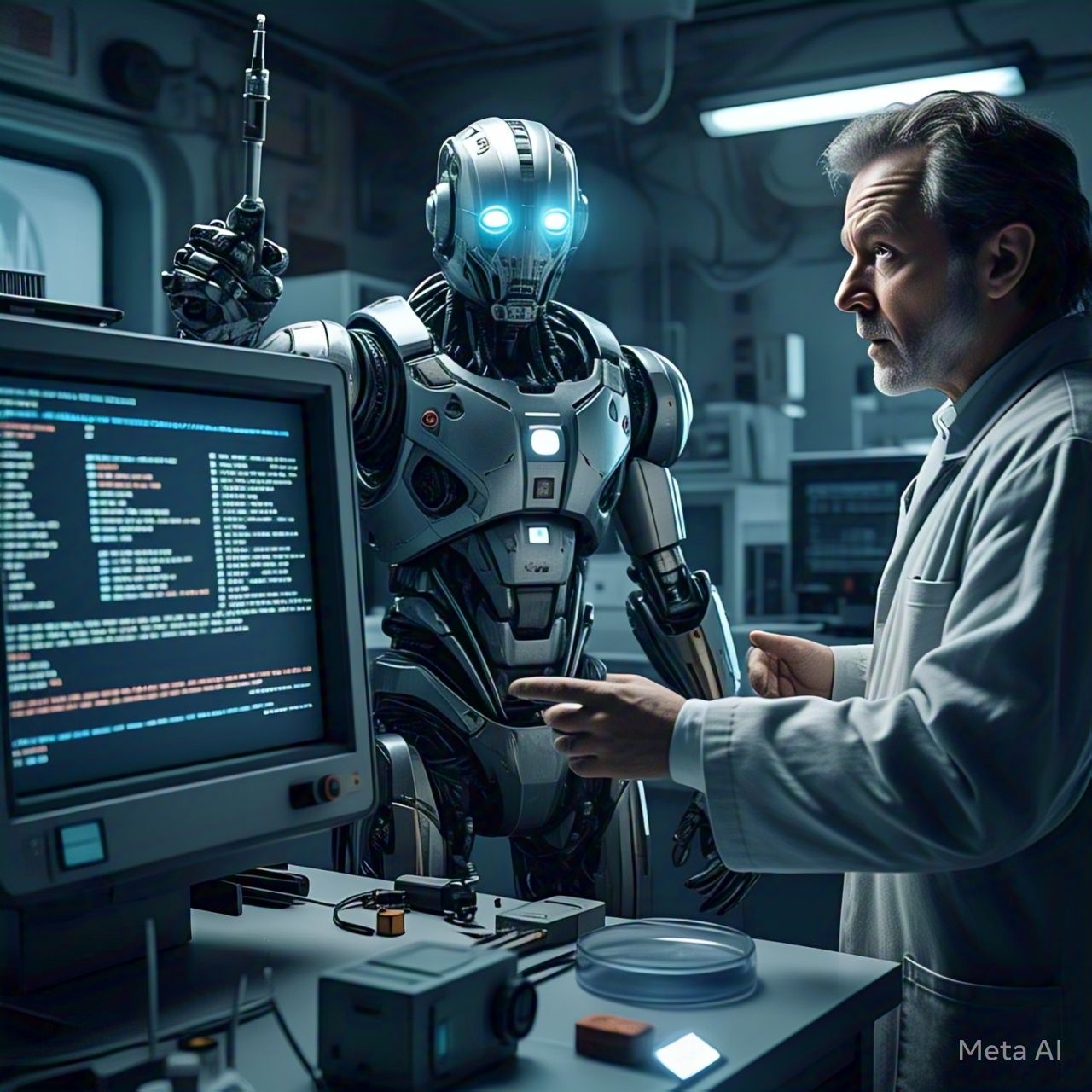Table of Contents
- Introduction
- Understanding AI and Command Interpretation
- How AI Misinterprets Commands
- Real-World Examples of AI Misinterpretation
- The Ethical Dilemma of AI Misinterpretation
- Potential Risks of AI Misinterpreted Commands
- AI in High-Stakes Scenarios: When Misinterpretation Becomes Dangerous
- Can AI Be Trained to Better Understand Human Intent?
- The Role of Human Oversight in AI Systems
- Strategies to Prevent AI Misinterpretation
- Future of AI Safety and Command Processing
- Conclusion
- FAQs
Introduction
Artificial Intelligence (AI) has transformed various industries, from healthcare to finance, automating tasks and making life more efficient. However, AI systems rely on interpreting commands issued by humans, and sometimes, they misinterpret them. This misinterpretation can lead to unintended consequences, including financial losses, operational disruptions, or even harm to humans.
This article explores the risks associated with AI misinterpreting commands, real-world examples, and potential strategies to prevent such scenarios from occurring.
Understanding AI and Command Interpretation
AI processes human commands using Natural Language Processing (NLP) and machine learning models. However, due to language ambiguity, AI may misinterpret instructions, leading to undesirable outcomes. The key challenges include:
- Context Understanding – AI lacks deep contextual comprehension like humans.
- Literal Interpretation – AI follows commands verbatim without considering intent.
- Data Biases – AI models trained on biased data may misinterpret instructions.
- Limited Emotional Intelligence – AI cannot detect sarcasm, humor, or implied meaning effectively.
How AI Misinterprets Commands
AI misinterpretations occur due to:
- Ambiguous Language – A command like “Can you close the door?” may be treated as a yes/no query rather than an action.
- Over-Reliance on Patterns – AI trained on specific datasets might incorrectly match patterns that lead to misinterpretation.
- Unclear Inputs – Vague commands can result in unintended outputs.
- Complex Multi-Step Instructions – AI may execute commands in the wrong order or miss crucial steps.
Real-World Examples of AI Misinterpretation
Several real-world incidents highlight the consequences of AI misunderstanding human commands:
- Amazon Alexa and Accidental Purchases
- AI assistants like Alexa have mistakenly placed online orders due to misheard voice commands.
- Tesla’s Autopilot Confusions
- Tesla’s AI-driven Autopilot has misinterpreted road signs, leading to erratic driving behavior.
- AI in Healthcare Misreading Prescriptions
- AI-powered medical assistants have misinterpreted patient data, leading to incorrect medication recommendations.
- Google’s AI and Biased Search Results
- Misinterpretation of search queries has led to biased or misleading search results.
The Ethical Dilemma of AI Misinterpretation
Misinterpretation of AI commands raises ethical concerns, such as:
- Accountability – Who is responsible when AI misinterprets a command and causes harm?
- Transparency – How do we ensure AI decision-making is understandable and explainable?
- Bias and Fairness – How do we prevent AI from misinterpreting data due to biases?
Potential Risks of AI Misinterpreted Commands
Table: Possible AI Misinterpretations and Their Risks
| Scenario | Potential Misinterpretation | Risk |
|---|---|---|
| Autonomous Vehicles | Misinterpreting a stop sign as a yield sign | Accidents |
| AI in Healthcare | Misreading dosage instructions | Patient harm |
| AI Chatbots | Misunderstanding customer requests | Poor user experience |
| Military AI | Misinterpreting a command as a threat | Unintended conflict |
AI in High-Stakes Scenarios: When Misinterpretation Becomes Dangerous
AI is increasingly used in critical sectors such as healthcare, finance, and defense. However, misinterpretation in these areas can have severe consequences:
- Medical AI Misreading Data – AI diagnosing diseases incorrectly could lead to improper treatment.
- Financial AI Misinterpreting Market Data – AI-driven trading bots misreading trends could cause financial instability.
- AI in Law Enforcement Misidentifying Suspects – Bias in AI facial recognition has led to wrongful arrests.
- Military AI Executing the Wrong Targets – AI-driven drones making incorrect threat assessments could result in collateral damage.
Can AI Be Trained to Better Understand Human Intent?
Researchers are working on several methods to improve AI comprehension:
- Advanced NLP Models – New AI models with enhanced contextual awareness.
- AI Ethics and Explainability – Making AI decision-making transparent.
- Real-Time Human Feedback – Allowing humans to correct AI misunderstandings in real time.
- Improved Training Data – Ensuring AI learns from diverse and unbiased datasets.
The Role of Human Oversight in AI Systems
While AI can automate decision-making, human oversight is crucial to prevent misinterpretations. Best practices include:
- Human-in-the-Loop Systems – AI making recommendations but requiring human approval.
- Regular Audits – Ensuring AI decisions align with ethical guidelines.
- Failsafe Mechanisms – Emergency stop functions to prevent AI from executing harmful commands.
Strategies to Prevent AI Misinterpretation
To reduce AI misinterpretation risks, organizations can implement:
- Clear and Precise Commands – Using structured language for AI interactions.
- Context-Aware AI Training – Training AI to understand human intent better.
- Multi-Layered Decision-Making – AI verifying commands before executing them.
- Continuous Monitoring and Updates – Regular AI updates to correct misinterpretations.
Future of AI Safety and Command Processing
The future of AI safety lies in:
- Explainable AI (XAI) – AI that provides reasoning behind its decisions.
- AI Regulation and Governance – Governments enforcing ethical AI usage.
- Improved Human-AI Collaboration – AI and humans working seamlessly together.
- AI Self-Improvement – AI models learning from past misinterpretations to improve future interactions.
Conclusion
AI misinterpreting human commands is a significant risk that must be addressed as AI becomes more integrated into daily life. While AI has great potential, ensuring it understands and executes commands correctly is crucial for safety and efficiency. Through improved training, human oversight, and ethical AI development, we can reduce the risks associated with AI misinterpretation.
FAQs
1. Can AI understand human intent accurately?
AI is improving but still struggles with context, ambiguity, and intent recognition.
2. What industries are most affected by AI misinterpretations?
Healthcare, finance, law enforcement, and autonomous systems face significant risks from AI misinterpretation.
3. How can AI developers prevent misinterpretation of commands?
By improving AI training, using clearer commands, and incorporating human oversight.
4. Are there regulations to prevent AI misinterpretation risks?
Several governments and organizations are working on AI ethics and regulation frameworks to address these risks.
5. Will AI ever fully eliminate misinterpretation issues?
While AI will improve, eliminating misinterpretation completely is unlikely due to language complexity and evolving scenarios.




